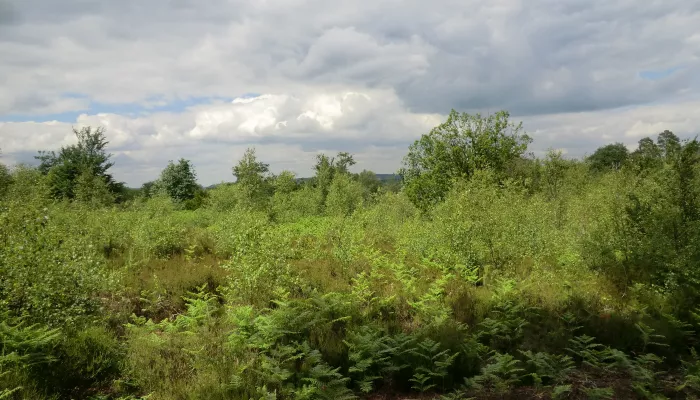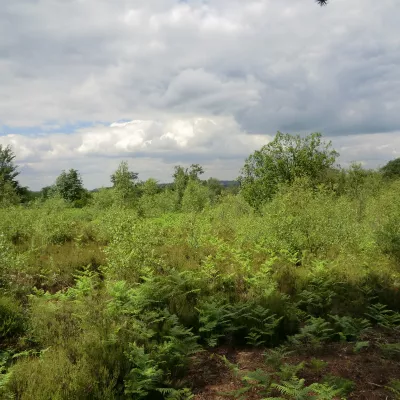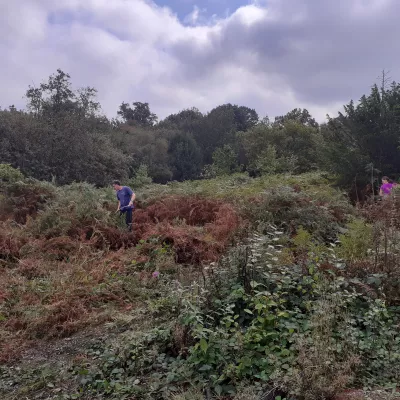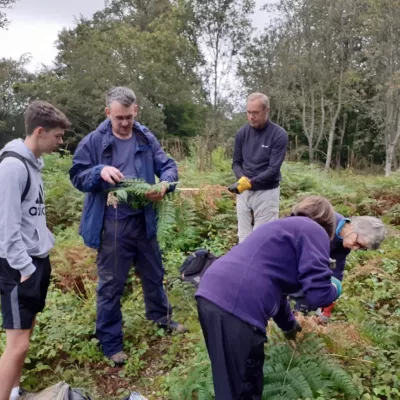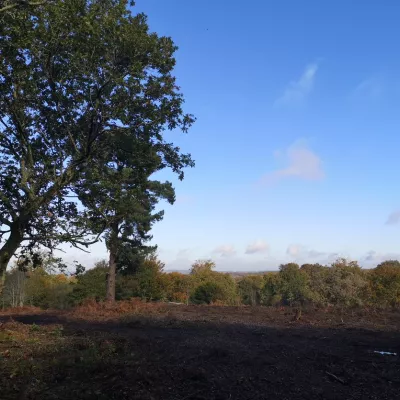Bitchet Common is a very special place
Once it was a large lowland heath, one of the rarest environments on earth, supporting a variety of wildlife, including some endangered species. Over the years, there have been changes to the way the Common has been used and non-native plants have become widespread leading to a decline in this rare heathland habitat. Paths and bridleways have also become overgrown, making Bitchet less accessible and enjoyable for people. But, this project aims to bring Bitchet back to its former glory. Once the improvements are complete, the Common will once again support a wide variety of plants and animals and become a place for people to enjoy.
Bitchet Common may look like an unspoilt wilderness, but it’s been managed by people since the Bronze Age (3000 BC to 1200 BC). People collected wood for fuel and building materials, grazing their animals on the cleared land. Bracken and shrubs were harvested for bedding. These conditions allowed lowland heathland plants and animals to flourish for thousands of years. During the reign of Elizabeth I, Bitchet Common came into the ownership of the Sackville family of Knole. In recent times, as people no longer grazed animals or managed the woods, the Common has become overgrown and less used.
Lowland heathland, such as Bitchet Common, is rarer than rainforest. In the UK, we only have 16% of the area remaining that existed in 1800. Bitchet was home to rare animals, including the nightjar. But this nocturnal bird with its distinctive song has not been seen or heard at Bitchet for some years. Whilst the Common is still home to green and great spotted woodpeckers, buzzards, sparrowhawks, small mammals and reptiles, their habitat is at risk as Bitchet becomes further overgrown.
Introduced plants are taking over from our native species. While rhododendron may look great in your garden, these plants originate from Asia, North America and the warmer parts of Europe and are spreading fast. They provide virtually no food or habitat for our native animals. Birch, some originally from other parts of the country, is also prevalent. The once harvested bracken is now widespread, growing up to eight feet tall with little else growing beneath.
With additional match funding from the Enovert Community Trust, we are restoring 5.5 hectares of heathland: the equivalent of 11 full-size football pitches. Ecological surveys showed Bitchet Common would benefit from the removal of invasive rhododendron, cherry laurel, birch and bracken encroachment in order to restore the heathland which once existed here. This will involve the removal of rhododendron and birch and turning over the soil to expose the seeds from native heathland plants (which have laid dormant for years) allowing them to grow.
After the initial clearance works in 2019 there were positive signs including the recording of 14 positive indicator species in 2020 (post initial works), compared to only 6 in 2019 (pre initial works). We continue to monitor a mix of management approaches including hand cutting, machine cutting and also bruising the bracken to assess the most effective method for Bitchet Common.

